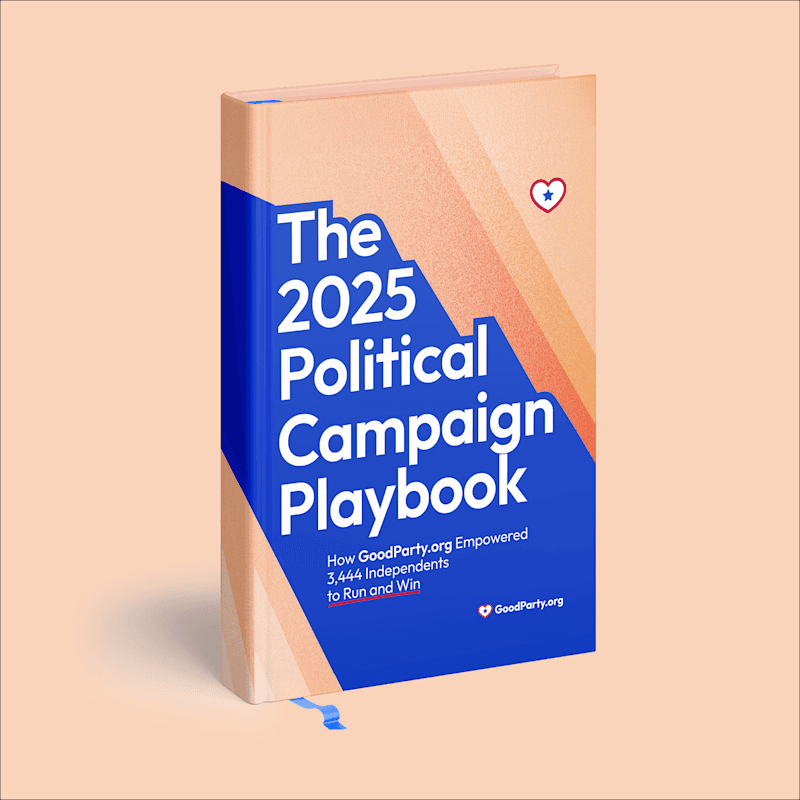
How Many Uncontested Elections Are There in 2024?
In this busy election year, the United States is experiencing a high rate of uncontested elections. This means that candidates are running for office without any competition — preventing voters from having any real say in the matter.
As of April 2024, Ballotpedia has found that 71% of the 11,945 elections it has studied are uncontested. This number is slightly lower than the 76% of uncontested elections in March. In four states, Colorado, Louisiana, Nebraska, and Oregon, 100% of the current candidates studied are running unopposed.
This begs the question of why, in a country that thrives on competition (and where complaints about the quality of our representatives are expressed daily), are there so many uncontested elections?
Factors that Contribute to Uncontested Elections
On the surface, it seems there could be many reasons that people are unwilling to run for office. Politics has often seemed like a dirty business that few people are willing to engage in. There may also be a perception that, tired as we may be of the status quo, there are too many people who agree that we need change but aren’t sure how or where to go about initiating a more fair and representative political system.
However, according to Steven Rogers, an associate professor of political science at St. Louis University, about one-third of state legislators win their seats just by signing up to run. The further down the ballot you go, the greater the chance that you’ll encounter an unopposed race.
So, what are some factors that stand in the way of the average person throwing their hat into the political arena?
Several things contribute to the high number of uncontested elections, including:
Incumbent Advantage: Incumbents often have better name recognition, established political networks, and access to larger fundraising opportunities, which can deter potential challengers.
Political Apathy: Potential candidates feel that the current political climate or lack of voter engagement fail to justify the effort and expense it takes to run for office.
Voter Satisfaction: On the flip side of voter apathy is voter satisfaction with the way the incumbent is representing their district.
Electoral Barriers: Structural barriers, such as stringent qualification requirements for candidacy, high filing fees, and complex campaign regulations, can also discourage new entrants into the political arena.
Partisan Dynamics: In heavily skewed districts, whether they lean toward the Democratic or Republican parties, the minority party often struggles to field viable candidates. This could be due, primarily, to low expectations for success. In districts that are gerrymandered to be disproportionately R or D, they reason, why bother?
However, the lack of political competition and choice has a detrimental effect on our democracy.
The Impact of Uncontested Elections on Democracy
The impact of uncontested elections on democracy is profound. In fact, research shows that too many voters are offered no real choice in their representation come election day.
Without competition, there is less incentive for incumbents to be responsive to their constituents or to innovate policy-wise. Uncontested elections also diminish the electorate's voices and contribute to voter disengagement. When there is a lack of real choice at the polls, voters feel that their participation is unnecessary or irrelevant. Why show up to vote if you know your vote won’t make a difference?
However, the prevalence of uncontested elections also presents opportunities, especially for independent candidates.
The Opportunities Presented by Uncontested Elections
The high rate of uncontested elections may not even uncover the full extent of the problem. Many uncontested elections are simply canceled, and available offices won’t appear on the ballot at all. This presents opportunities for independents to represent their communities at all levels of state and local government.
Uncontested elections also have the effect of:
Encouraging New Candidates: Unopposed elections should encourage new candidates to consider running for office, as the field is less crowded.
Putting the Focus on Local Issues: Candidates in uncontested races can use the extra time and resources typically spent on competitive campaigning to focus more on local issues and direct community engagement.
Renewed Political Engagement: Highlighting the high number of uncontested races can spur movements to increase political engagement and awareness, potentially leading to more competitive future elections.
The data from 2024 underscores a trend that requires attention for those concerned with the health of democratic processes in the United States. It points to the need for reforms that lower barriers to entry for new political candidates, enhance electoral competitiveness, and ultimately strengthen democratic governance.
The high rate of uncontested elections also suggests significant room for improvement in how political competition is cultivated in various jurisdictions across the country. Barring major electoral reforms, there are still some strategies that independent candidates can use to leverage the dearth of competition in our elections.
Strategies for Independent Candidates in Uncontested Elections
The prevalence of uncontested elections presents a unique opportunity for independent candidates who are interested in running for office. Read on to learn some strategic steps that can help you run for office and win.
#1: Research and Target Opportunities
Start by researching offices in your state with a high frequency of uncontested elections. These are often indications of voter dissatisfaction or apathy, which can be advantageous for independent candidates.
It’s also important to understand the electorate. Study the demographic and political landscape of the district to tailor a campaign that resonates with the local electorate's concerns and values.
#2: Build a Strong Local Network
Next, you need to build awareness of your campaign and gain support from your future constituents. Engage with community members through local events, town halls, and other public forums. Listen to their needs and concerns to shape your platform. Garner support from well-known local figures who can influence public opinion and provide endorsements.
#3: Learn to Leverage a Variety of Media Platforms
Any solid campaign makes strategic use of a variety of traditional and digital media platforms. However, you should match the platform to the audience. Utilize social media to reach a wider audience and engage with voters online. Tailored ads and regular updates can help in building a strong online presence.
It’s also important to get involved with local newspapers, radio, and TV stations to gain visibility. Op-eds, interviews, and community announcements can also be effective.
Don’t be afraid to try new things and build on your learnings!
#4: Focus on Crafting Distinctive Messaging
Your platform is the backbone of an effective campaign. Your campaign messaging should be strong enough to stand out from the clutter of noise that leads to voter disengagement. Develop clear, concise, and compelling messaging that addresses local issues that are often neglected by other candidates or parties.
Position yourself as an alternative by highlighting the benefits of having an independent voice in office. These include unbiased decision-making and a focus on local priorities over party politics.
#4: Check Into Campaign Financing
One of the major barriers to independent candidates is fundraising. If you’re running in a race that requires it, start raising money as early in your campaign as possible. Use online platforms to facilitate small-dollar donations, and organize fundraising events to engage supporters.
As an independent, it’s also essential to demonstrate financial integrity, which can help build trust. Be transparent about who your donors are and how the funds are being used.
#5: Mobilize Volunteers
Grassroots mobilization is essential, especially for local races. Build a volunteer base to help with canvassing, phone banking, and voter registration drives. Personal interactions are crucial for independent campaigns. Utilize the diverse skills of volunteers for everything from graphic design for campaign materials to data analysis for targeting potential voters. Be cognizant about reporting and transparency issues in relation to in-kind political contributions.
#6: Focus on Promoting Voter Registration and Turnout
Improving the level of competition in elections is fruitless if we can’t get people to the polls. In addition to building a campaign that excites voters, you can do your part to get people to the polls in other ways. Consider organizing voter registration drives to ensure that more people are registered to vote, especially in areas where voter turnout is historically low.
You can also amplify get-out-the-vote efforts. On election day, make sure to have a strong plan to remind and help people to go to the polls. This can include arranging transportation for elderly and disabled voters.
By adopting these strategies, independent candidates can effectively leverage the landscape of uncontested elections to run competitive campaigns. This approach not only increases their chances of winning but also strengthens the democratic process by ensuring that more voices are heard and represented in government.
Final Thoughts
As you can see, the proliferation of uncontested elections in the United State provides many opportunities for independents to make their mark this election year. All you need to do is take that first step.
In many locations, there is still time to launch your indie campaign for a state or local elected position! Check the Secretary of State directory for filing deadlines or use our local office look-up tool for specifics about races in your area.
This handy tool is just one of the many resources GoodParty.org has developed to help independents run for office and win.

